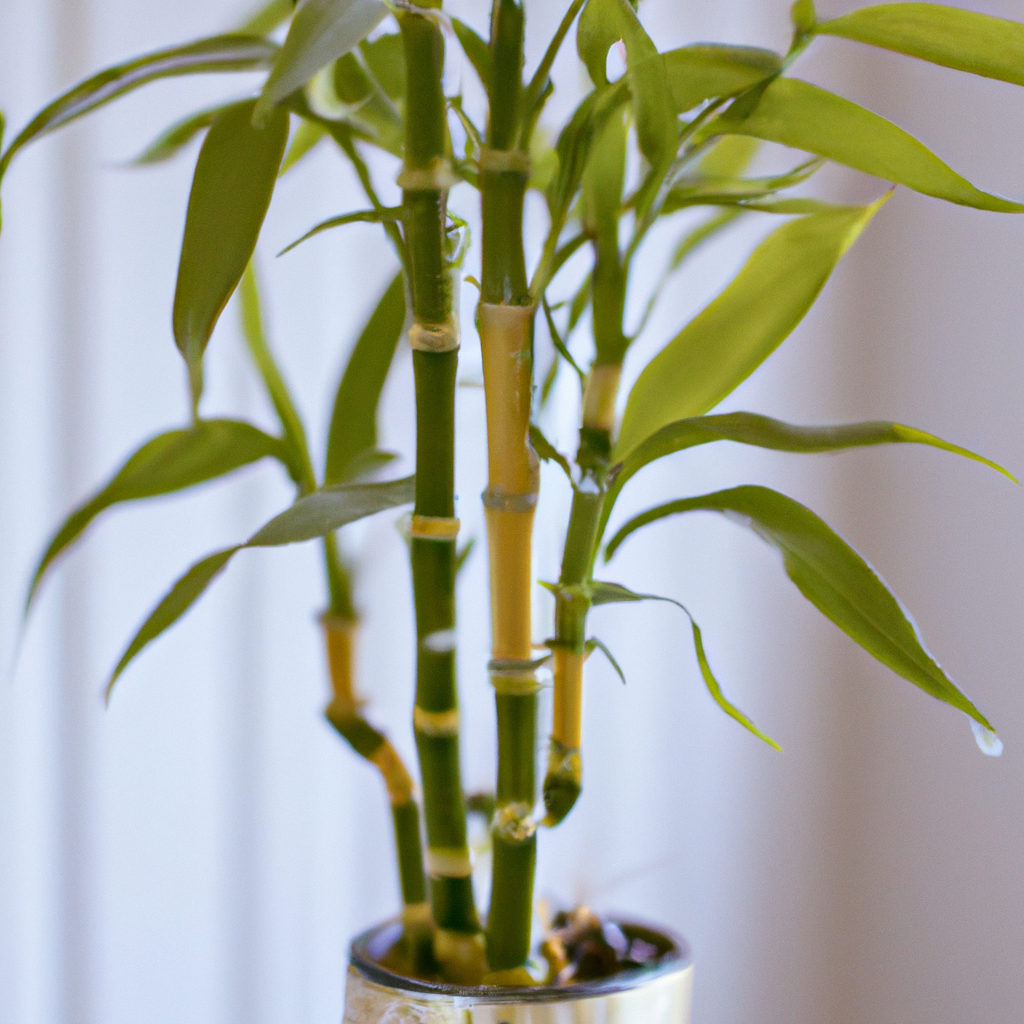The Lucky Bamboo Houseplant: A Care Guide for Optimal Health
The Lucky Bamboo houseplant (also known as Dracaena sanderiana) is a popular choice for many gardeners, thanks to its attractive foliage and resilience in the home. But, like all houseplants, Lucky Bamboo needs proper care and attention if it is to thrive. Here is a comprehensive guide on how to care for your Lucky Bamboo in order to keep it healthy and vibrant.
Understanding Lucky Bamboo
Although the name might suggest otherwise, Lucky Bamboo is not actually a type of bamboo. It is an evergreen perennial belonging to the lily family, and native to West Africa. It is an ideal choice for indoor settings and requires minimal care, making it a perfect houseplant.
Selecting and Planting Your Lucky Bamboo
If you’d like to purchase a Lucky Bamboo plant, it is advisable to select young plants that are showing signs of new growth. Take into account the size of the plant when buying. If you plan on keeping the plant indoors, then it is better to get small-to-medium sized plants as larger ones may outgrow the space.
When it comes to planting your Lucky Bamboo, some consideration must be taken. The best option is to use a planting medium that is a combination of half potting soil, half perlite. This provides the perfect balance of drainage and aeration to ensure that the root system receives all the nutrients it needs. Make sure to fill the pot with enough soil that the plant is stable and won’t tip over. It is also important to remember that Lucky Bamboo does not need a lot of water, so don’t add too much soil – just enough to provide support for the roots.
West African Environment
Lucky Bamboo, as its native environment suggests, prefers bright indirect light, with some direct morning or late day sun. But too much intense direct sunlight can burn the leaves, so keep it away from windows where there may be strong direct sunlight.
The ideal temperature range for Lucky Bamboo is between 18-24 degrees Celsius (64-75 Fahrenheit). During the winter months, however, it should be kept at around 15-20 degrees Celsius (59-68 Fahrenheit) as this is when it goes into its dormancy stage.
The Right Water For Your Lucky Bamboo
When caring for a Lucky Bamboo plant, one of the key considerations is providing it with the right kind of water. Lucky Bamboo prefers water that has been treated or filtered as it contains fewer impurities and minerals. Tap water can be used but needs to be left to stand for several hours before use in order for some of these impurities and minerals to dissipate.
It is important to note that Lucky Bamboo does not need too much water, nor does it like wet roots. As a general rule of thumb, water your plant whenever the top inch of the soil feels dry to the touch. Keep an eye on your plant and if you notice drooping leaves or yellowing foliage this may mean that it is being over-watered.
Fertilizing Your Lucky Bamboo
Just like any other houseplant, Lucky Bamboo also needs fertilizer in order for it to reach its full potential in terms of growth and health. Generally speaking, Lucky Bamboo will do well with any liquid high-quality fertilizer available in garden centres or online stores. However, bear in mind that this should be used sparingly and only whilst the plant is actively growing during the spring and summer months – once every four to six weeks should suffice.
Common Pests and Diseases
One of the main advantages of having a Lucky Bamboo houseplant is its resilience when it comes to pests and diseases. Despite this resilience, however, there are still certain pests and diseases that you need to be aware of and look out for when caring for your plant.
Mealybugs and aphids are two common pests that can cause damage to your Lucky Bamboo. Both insects excrete a sticky substance which can cause discolouration of the leaves and weakens the plant. If left untreated, infestations can become severe – so make sure to inspect your plant regularly and act quickly if you spot any signs of infestation. The good news is that they can be easily treated with an insecticidal soap spray or an insecticidal neem oil solution.
As far as diseases go, bacterial blight and leaf spot are two common ones
